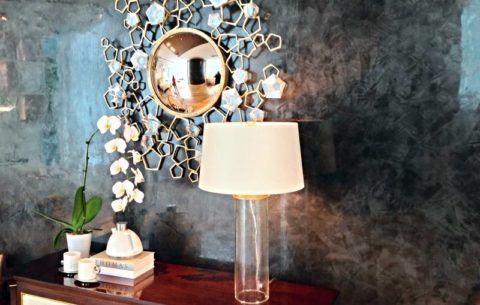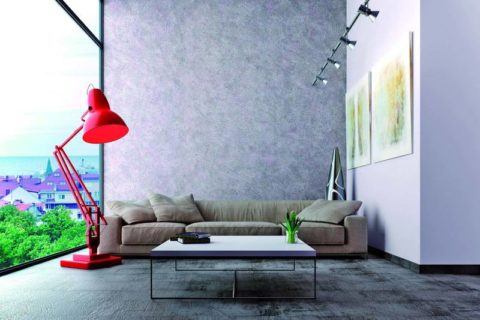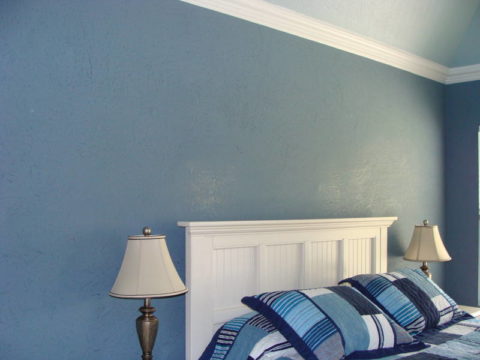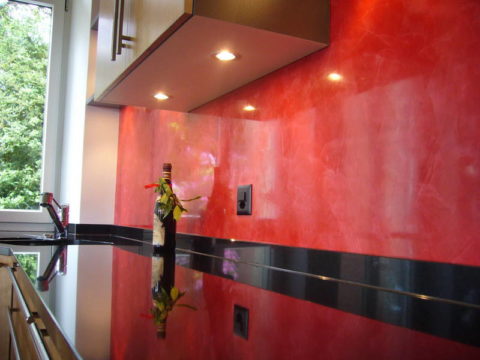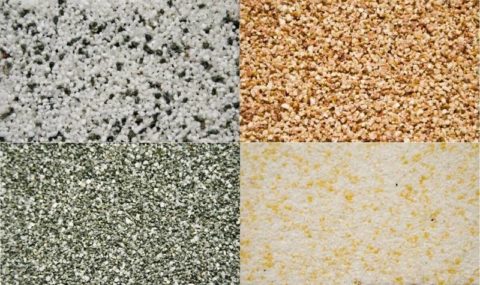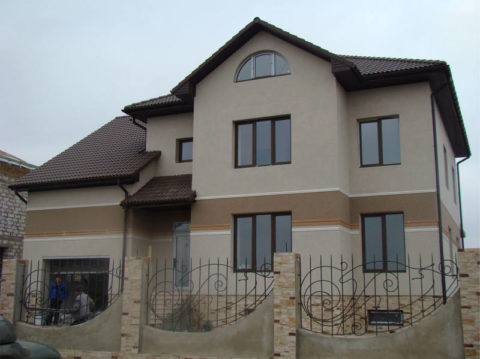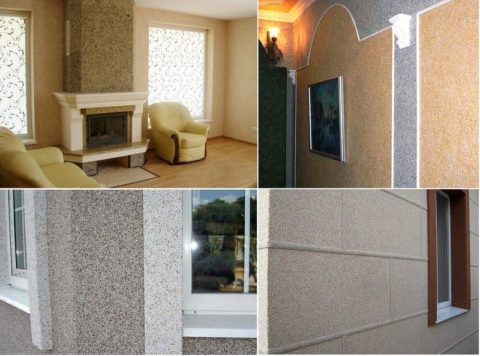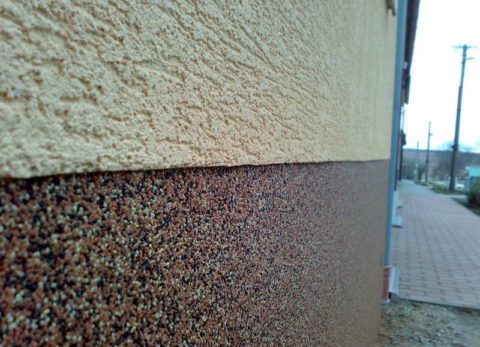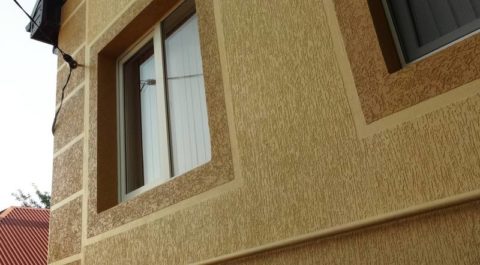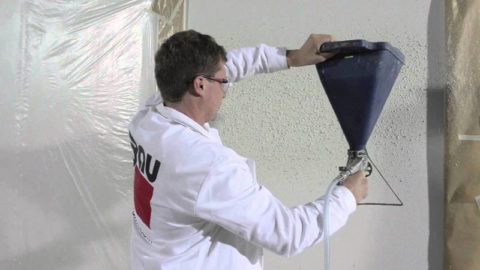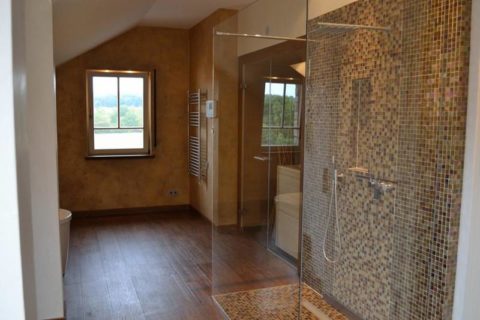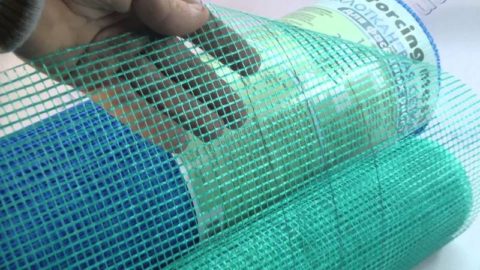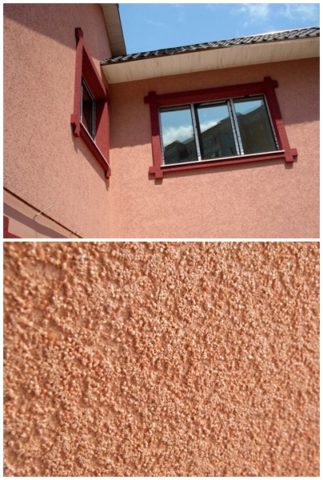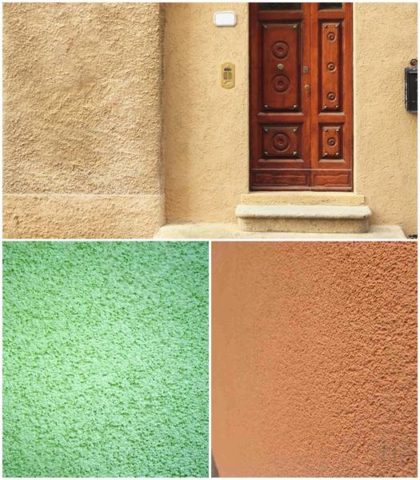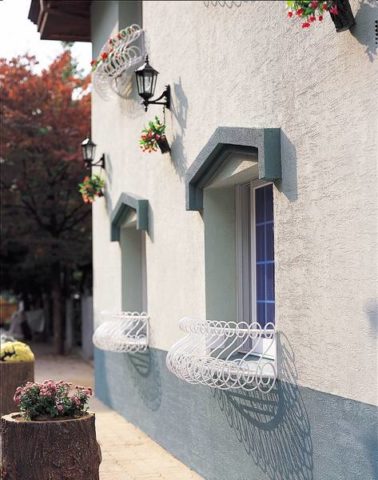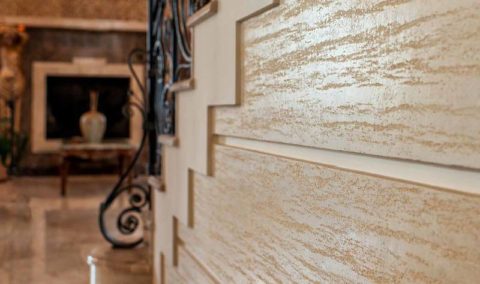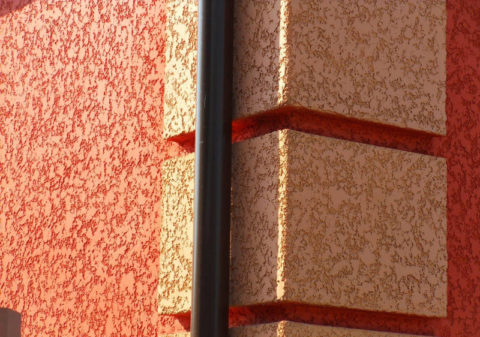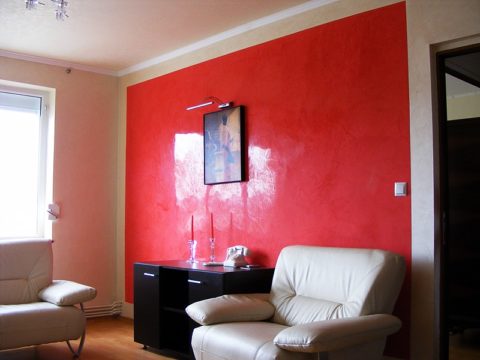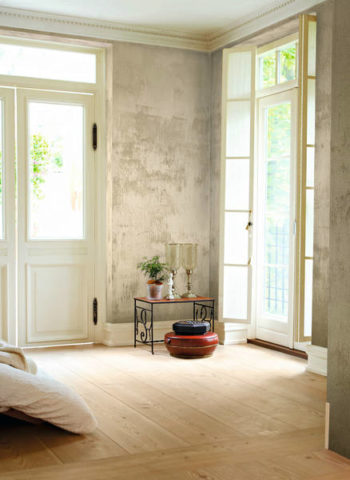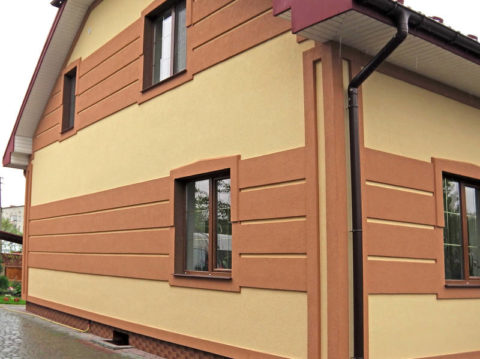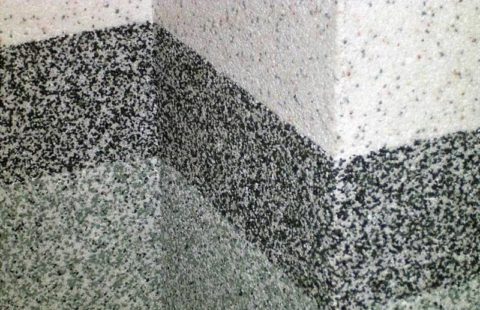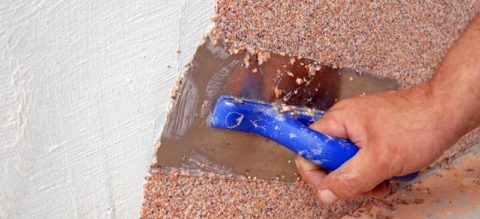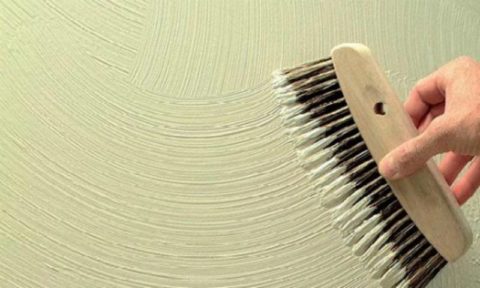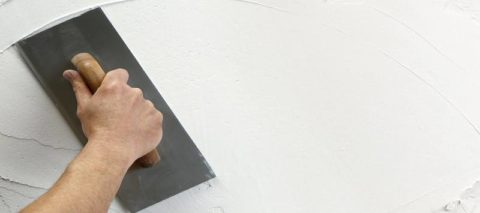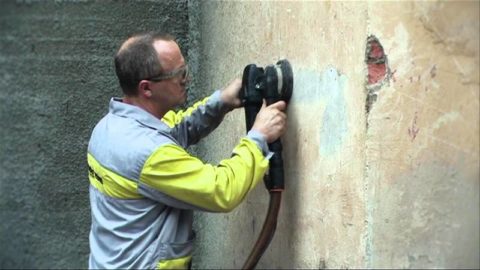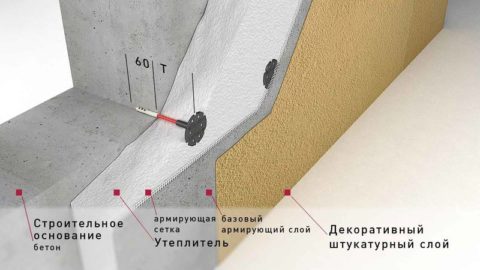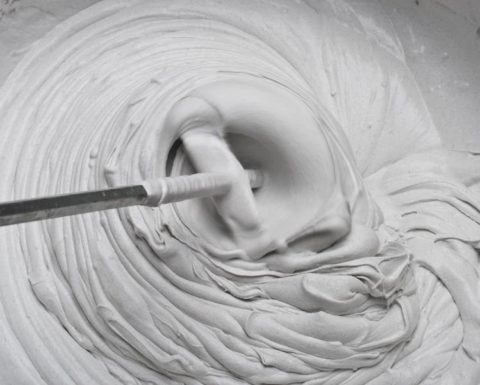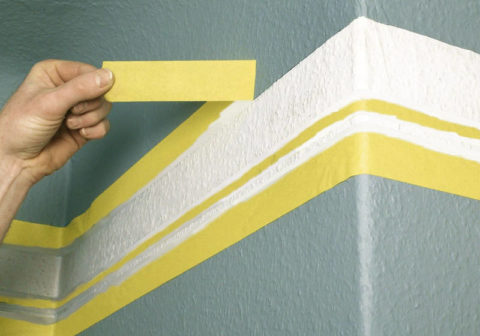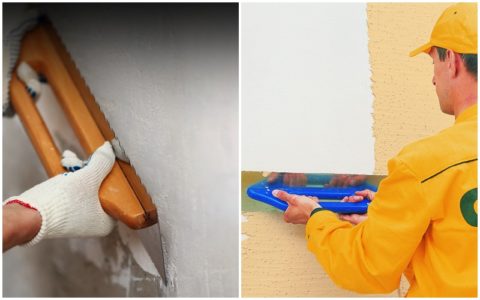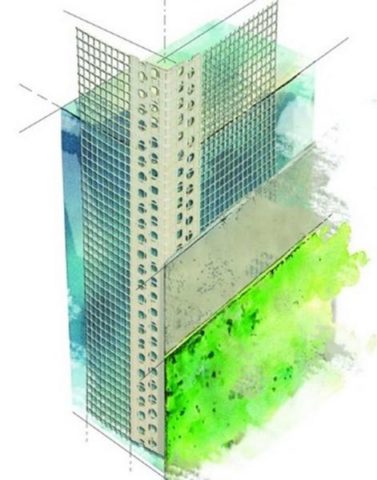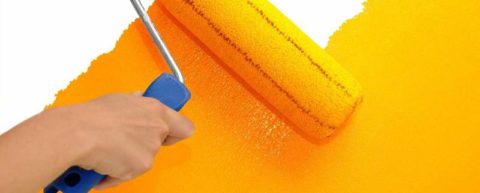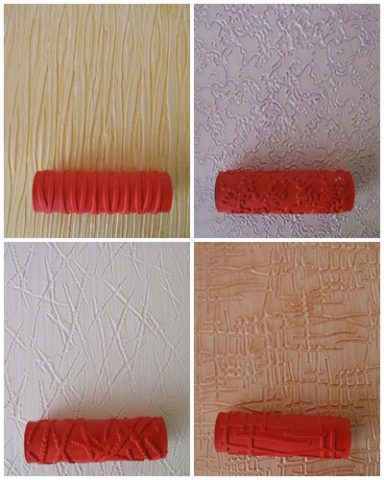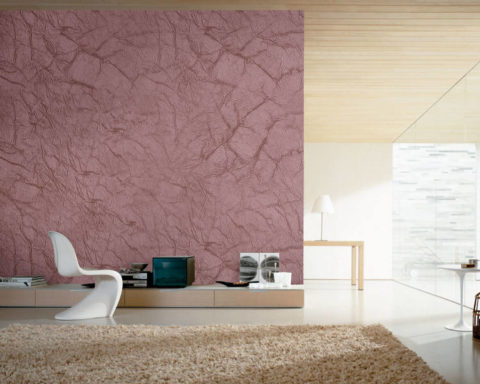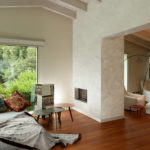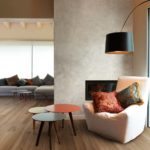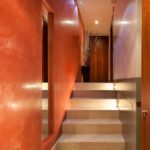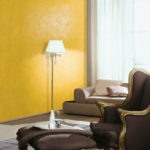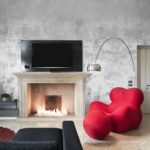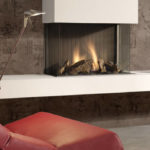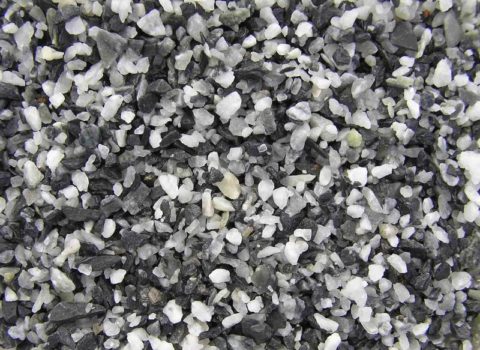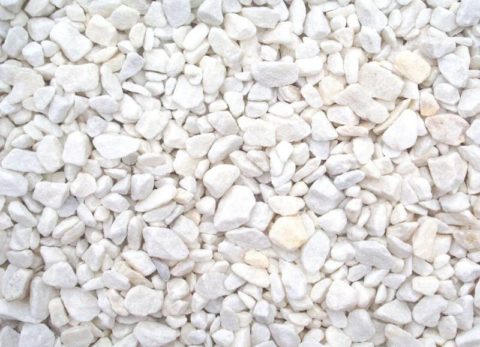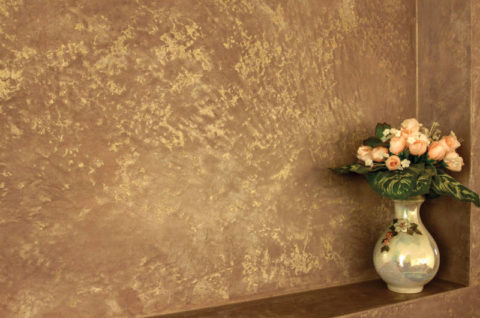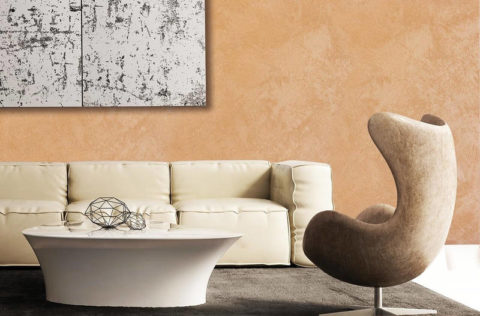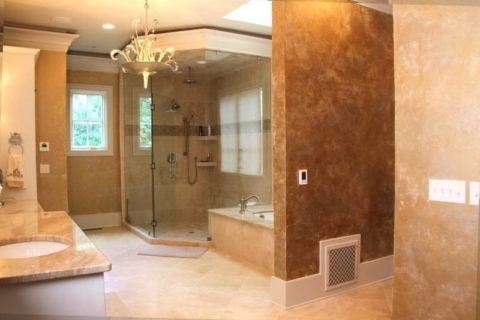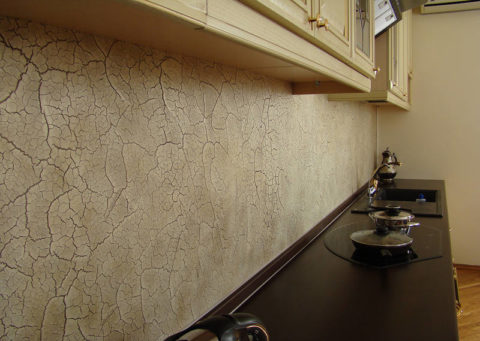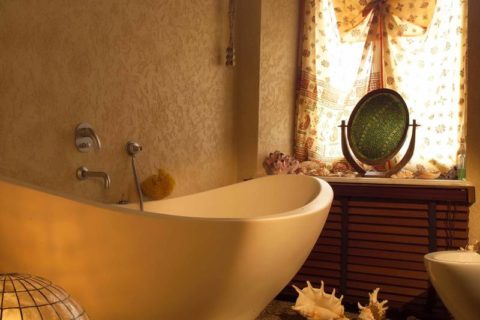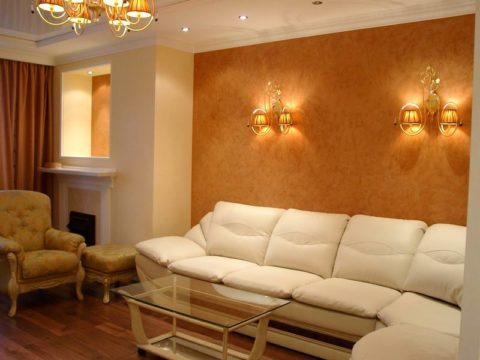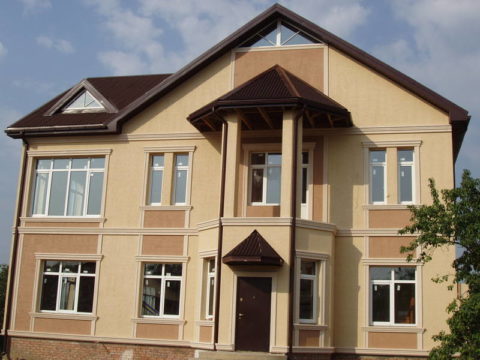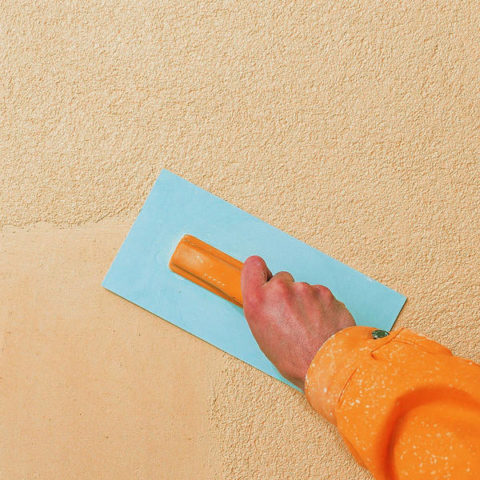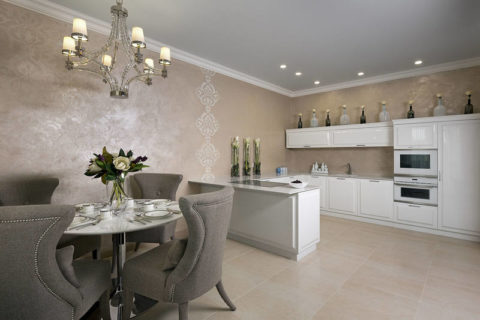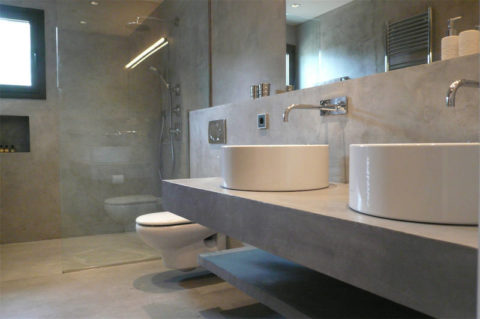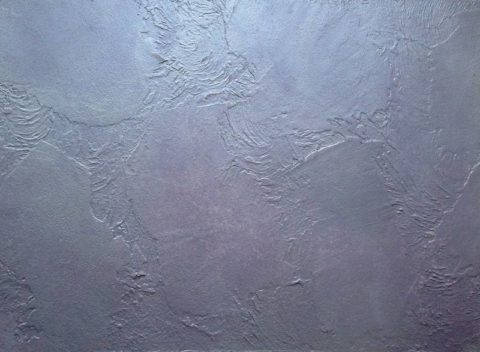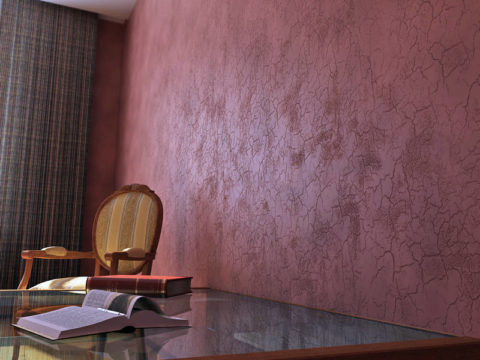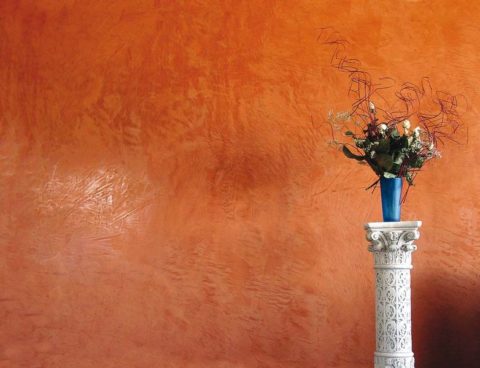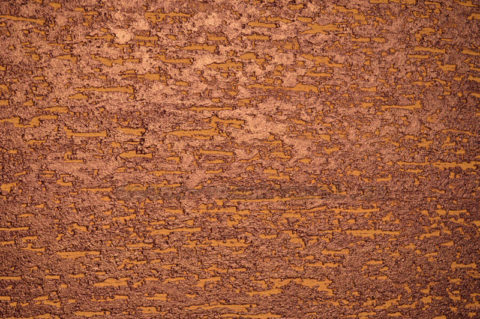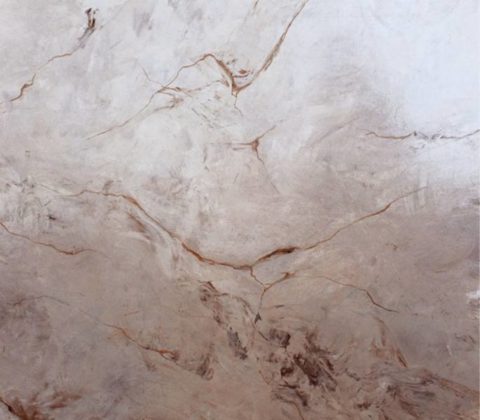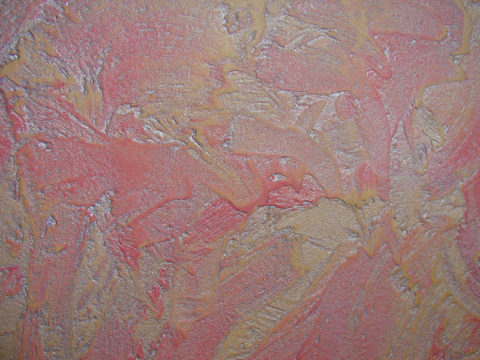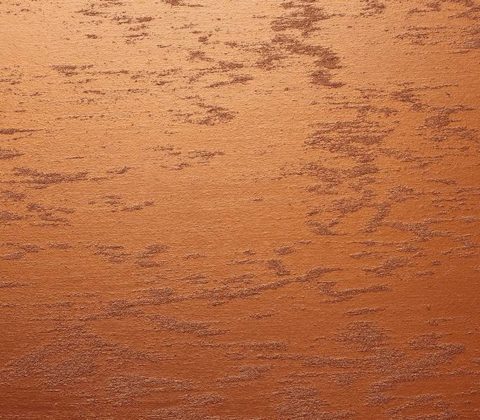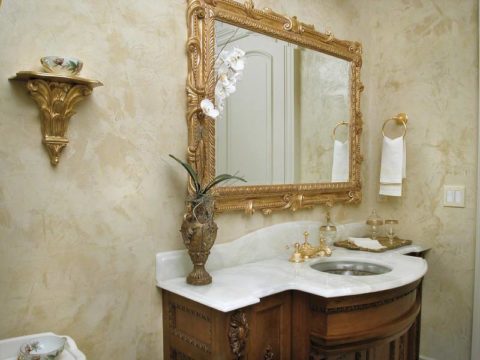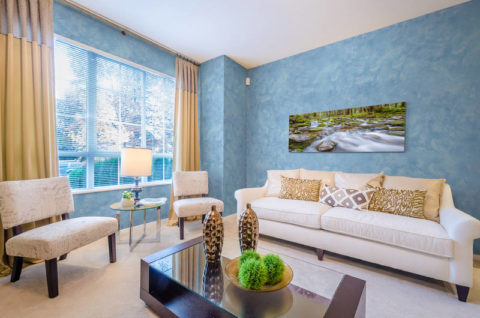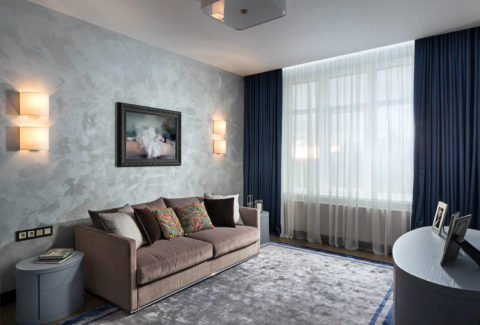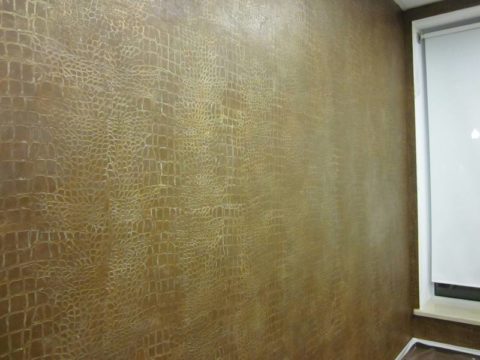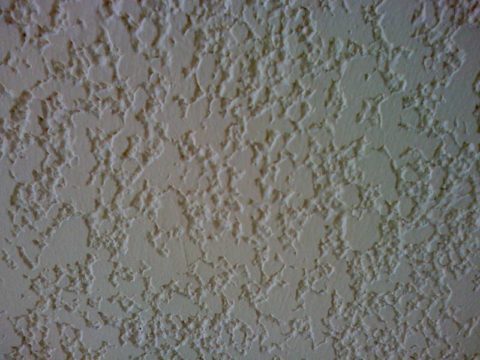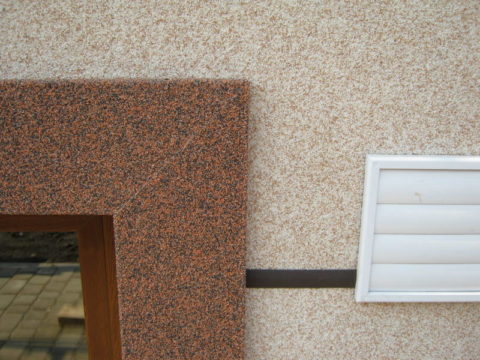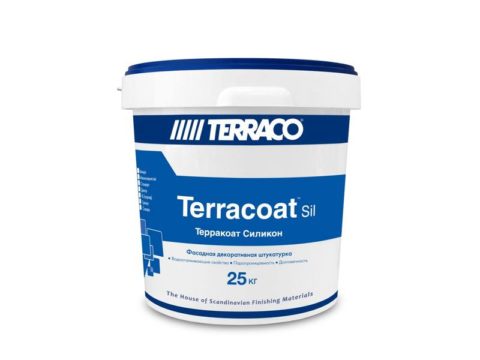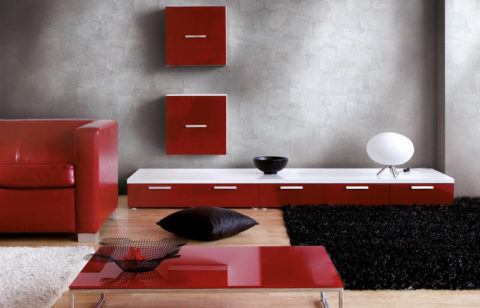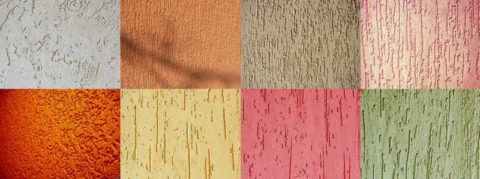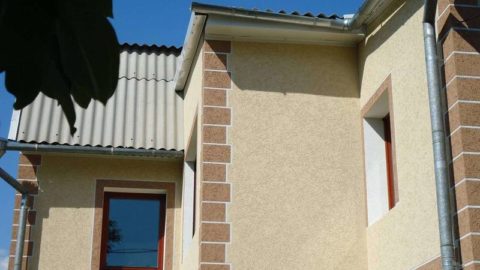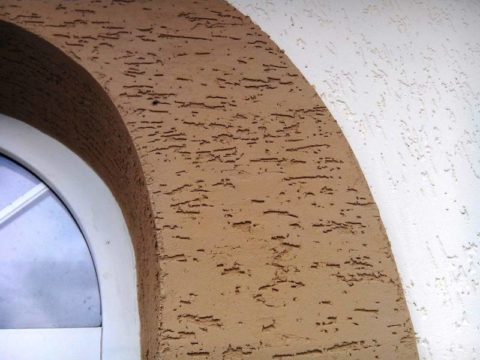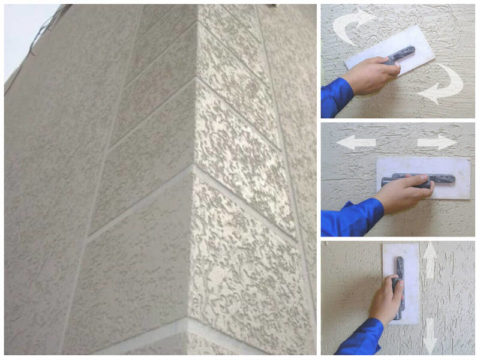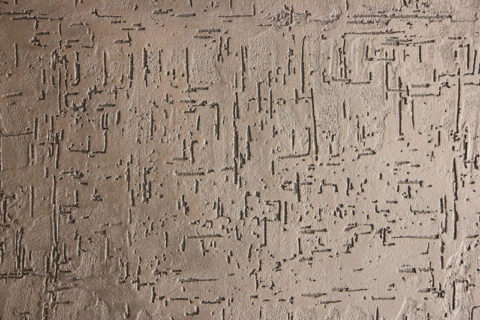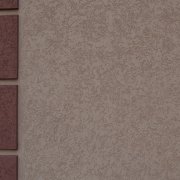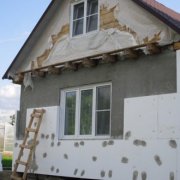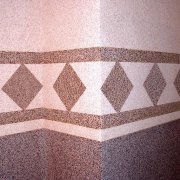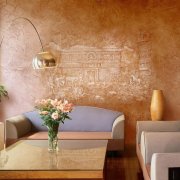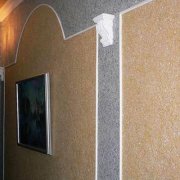What decorative plaster to choose - types, features, application technology
Decorative plaster is a traditional finishing material, which is used for indoor and outdoor use, thanks to a variety of textures and shades. The modern market is full of offers from foreign and domestic manufacturers.
In order not to get lost among this variety and choose the necessary composition to obtain the intended effect when decorating the surface of walls or ceilings, it is important to have an idea of the types of plaster and their features. What decorative plaster to choose will help to figure out this article.
The content of the article
The main types of decorative plasters and their features
Relatively recently, a mixture of sand and cement was used solely for practical purposes, when it was necessary to level the surface qualitatively before a fine decorative finish. But modern technologies aimed at improving traditional building and finishing materials have allowed expanding the capabilities of plaster compositions and making them universal.
Decorative plasters of the new generation not only smooth out the surface qualitatively, creating a solid monolithic coating, but also give the walls an expressive texture, the variety of which depends on the composition of the mixture and the application technique. To decide which decorative plaster to choose, you need to consider their main types and qualities that they possess.
It is possible to classify decorative stucco compositions by the type of binding element in their composition, type of filler and method of application.
The video in this article will tell you about what decorative plaster happens and how to apply it to create a unique interior.
Mineral plaster
This environmentally friendly material for decorating includes only natural ingredients. Mineral plaster It is universal, as it is suitable for external and internal use. Its main qualities are profitability, ease of application and further operation, as well as an affordable price, thanks to the inexpensive common components in its composition.
The presence of white and gray Portland cement or lime as the basis in the composition of the mineral decorative mixture allows its use in any conditions, with the exception of conditions under which vibration or natural shrinkage of buildings is inevitable.
Important! The low ductility of mineral plaster does not allow it to be used as a finishing material for the walls of houses located in close proximity to busy highways, railways or tram tracks due to the fact that the integrity of the plaster layer is disturbed by vibration and cracks occur. The same thing happens with the natural shrinkage of newly built houses.
Marble or granite chips are used as a natural filler in mineral plaster.Mineral decorative plaster - which one to choose, you can understand by familiarizing yourself with its positive qualities.
Positive qualities of the composition
Mineral plaster has many positive qualities, thanks to which it does not lose its popularity in the construction market and can compete with many innovative finishing materials.
One of these qualities is that this plaster quickly sets. After 15 minutes, the composition begins to harden, and after 2 days, the coating gains its strength.
This can not but rejoice the professional, but can be a real challenge for a beginner. Carrying out finishing work with the help of mineral plaster with your own hands, it should be remembered that the solution must be applied quickly and efficiently the first time.
Important! When applying the material in several layers, the coating will turn out to be uneven, which will be striking, therefore, if there is no self-confidence, it is better to entrust the work to experienced craftsmen.
You can get a flat surface in a short time using the mechanized method of applying the composition. A special plastering machine allows you to mix a mixture of the required consistency than with manual kneading, which cannot but affect the quality of the coating.
The plaster composition is supplied under pressure and the machine strictly doses portions, so the coating is smooth and has the same thickness over the entire wall area. Thanks to a special nozzle, the solution can be fed to the most inaccessible places.
The speed of plastering works increases at times, and the cost of paying for labor is reduced, since one person can cope with the application of plaster. This is especially true if you need to process large areas.
Another positive quality of mineral plaster, which can be noted separately, is the high strength of the coating, which allows us to talk about its durability. As you know, when wetted, cement becomes stronger, therefore, under the influence of moisture, which penetrates the porous structure of the plaster coating, it becomes only stronger.
Important! When using mineral plaster as a finishing material for building facades, it must be additionally painted to improve the performance of the coating.
Among other positive qualities include:
- Affordable cost of the material, thanks to the natural inexpensive components in its composition;
- Vapor permeability allows the use of mineral plaster for finishing walls insulated with foam or mineral wool insulation;
- The porous structure gives the material insulating qualities;
- In the presence of certain skills, such a composition is easy to apply;
- The coating is resistant to mechanical stress and environmental influences;
- The material is non-combustible due to the natural components in its composition.
Among the disadvantages, the following can be noted:
- The coating is relatively durable, as it retains its qualities for no more than 10 years;
- This plaster mix has a white color and cannot be tinted, but after application it can be painted in any shade;
- The low ductility, which was mentioned earlier, limits its use in conditions of mobility of the wall surface during vibration or natural shrinkage;
- Mineral plaster is not always sold ready-made, so you need to knead it yourself by adding water. Instructions on how to properly prepare the composition are indicated on the package.
Structure
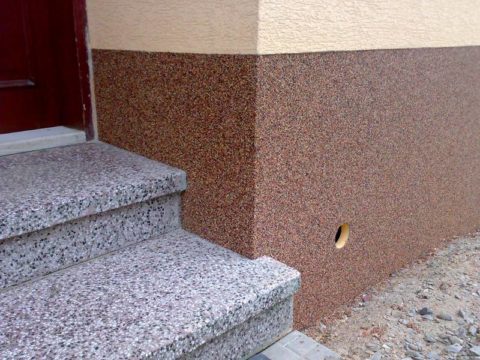
The composition of mineral plaster may include the following components:
- Hydrated (slaked) lime;
- White Portland cement (M500 and above);
- Granules of marble, granite or sandstone;
- Crushed quartz, anthracite, glass, mica, ceramic balls;
- Colored clay;
- Lightweight fillers.
To increase moisture resistance, special additives are introduced into the composition of mineral plaster, which do not reduce its vapor permeability. Thus, the appearance of fungus in the plaster layer is excluded.
Important! If the layer of mineral plaster exceeds 2 cm in thickness, then preliminary reinforcing of the surface with the help of a mesh is necessary.
The most common application techniques that can be used in working with mineral plaster are:
- Lamb;
- Fur coat;
- Grooves;
- Travertino;
- Bark beetle.
Mineral decorative plaster - what happens, and what is its advantage over other finishing materials will be described below. Compounds with coarse-grained fillers are used for decorating building facades or for decorating in the interior.
For internal work, a fine-grained mineral mixture is used, which is applied using a roller, brush or other methods, depending on the desired effect.
Separately, it is worth noting the fine-grained mineral plaster, which has in its composition marble chips. This mixture is used to create a Venetian coating that mimics the polished surface of natural stone. The multilayer application method, with grinding and ironing of each subsequent layer, allows you to create a unique pattern.
Important! For the decoration of residential premises, it is recommended to use mineral plaster, which includes exclusively natural fillers - marble or granite chips, sandstone or quartz. Plaster, which includes anthracite, mica, glass and their dust, should be used only for outdoor use.
The amount of plaster mix required for work will depend on how well prepared the base is and on the size of the filler. The larger it is, the greater will be the thickness of the coating, and hence the consumption of material.
Internal work
- Mineral plaster can be applied to any substrate. Most often it is used for finishing gypsum plasterboard surfaces, since in addition to the primer, such a base does not require additional preparation.
- Drywall is used to create arches, niches, cornices, suspended ceilings or even surfaces of walls and partitions in the interior.
- Using decorative mineral plaster, these elements can be given a unique expressive texture.
- Due to the fact that the coating of mineral plaster can be varnished, its color becomes more saturated and acquires a special gloss.
- At the same time, the strength of the plaster layer and its moisture resistance increases, which allows it to be used in rooms with high humidity and degree of pollution - in the kitchen, in the hallway or in the bathroom.
Outdoor work
The resistance of the mineral plaster to the manifestations of the environment in the form of precipitation and mechanical stresses allows it to be used for outdoor work in the decoration of facades, socles of buildings and exterior elements - enclosing structures, retaining walls, porches.
Mineral plaster for outdoor use possesses the following positive qualities:
- Frost resistance;
- Resistance to temperature differences;
- Resistance to direct sunlight;
- Resistance to detergents.
Due to the fact that mineral plaster is a non-combustible material and is able to withstand the effects of open fire, it is used for fire protection of wooden surfaces and products based on natural wood (MDF, chipboard).
When using one or another type of mineral plaster for facade work, you can get a variety of textures of the finish coating. Stucco can be pebble, it can have grooves or be silky.
Mineral plaster is a traditional material as a material for decorating facades. An example is the classic coating for facades with the effect of "fur coat".
Features of the application technology
When working with mineral plaster, the use of personal protective equipment in the form of gloves and glasses is recommended. Work with any plaster composition is accompanied by the formation of pollution, so work clothes should be used.
From the tools you will need the following:
- Capacity in which mixing of plaster mix will be made;
- For high-quality mixing of the composition, a construction mixer will be required;
- To apply the plaster you will need a set of spatulas and a metal grater;
- Trowel;
- A plastic grater can be useful to give the necessary texture;
- To create smooth angles, metal or plastic angular perforated profiles will be required;
- To reinforce the wall, you will need to purchase a stucco mesh and screws;
- Masking tape and lighthouses.
When working with mineral decorative plaster, the following rules must be observed:
- Plaster, due to its composition, is able to hide minor irregularities on the surface of the wall, but if there are obvious defects in the form of cavities or protruding fragments, then they must be eliminated. Irregularities, as well as foreign fragments, must be removed from the surface of the wall, and gaps must be expanded and putty;
- Then the surface of the wall is leveled using the starting composition. After it dries, the surface of the wall is sanded with sandpaper. If there are spots on the wall, they are degreased;
- When applying plaster on a soft base, for example, on mineral wool insulation, use a stucco (paint) grid, which, before applying the starting plaster layer, is attached to the surface of the insulation;
- To dedust the surface of the base and increase adhesion, it is primed twice. The second primer layer is applied only after the first has completely dried;
Important! Due to the fact that the mineral plaster composition quickly sets, it is necessary to dilute the amount of working mixture that is required for application in one go. Residues of the solution will not be suitable for repeated application.
- If the plaster is purchased in finished form, but its consistency does not match the desired, it can be diluted with water. It is important to mix the composition thoroughly so that it becomes homogeneous, otherwise, smudges may occur during the application of the composition and, as a result, the appearance of the coating will deteriorate. Suitable for work is a plaster composition, in consistency similar to thick sour cream;
- To create a geometric pattern or a combination of shades, using the masking tape fixed on the surface of the base, specify the necessary pattern;
- When applying the plaster composition, it is necessary to observe the movement of the tool from the bottom up or vice versa.In this case, the angle between the wall and the tool should be 15 degrees;
- The thickness of the applied layer should not exceed the largest thickness of the fractional filler;
- The work is done in such a way that first part of the solution is applied, which is immediately smoothed out with a spatula;
- When decorating corners, use perforated corners of metal or plastic;
- After the application of the plaster composition is completed, you need to wait about 20 minutes for the composition to begin to set, and then carefully remove the masking tape;
- After 2 days, when the coating finally hardens, it can be painted or varnished;
- When outdoor work, it is important that the surface dries out under conditions of protection of the fresh coating from exposure to street dust, wind and debris.
Mineral plaster in the interior
- This type of plaster can often be found in the decoration of public buildings - offices, hotels, as well as in the decoration of bathrooms, halls and kitchens in private houses and apartments.
- To finish the bathroom, you can use fine-grained pebble mineral plaster, which in texture resembles sand. It is resistant to moisture and fungus.
- As a finishing material for the walls of the hallway or staircase, you can use plaster with the effect of "Bark beetle".
- Coarse-grained plaster can be used to create an accent surface of one of the walls in the room.
Options for using decorative plaster in the interior are shown in the photo below:
- Light decorative plaster visually enlarges the space
- Accent wall in the bedroom using decorative black stucco effectively shades white elements
- The use of light-colored plaster fills the space of a small living room with light.
- Textured decorative plaster comes to life against a background of bright accents
- Bright plastered wall visually expands the narrow space
- Juicy yellow color of decorative plaster enlivens the monochrome space of the living room
- Unusual forms of upholstered furniture stand out against the background of the gray plastered wall and emphasize its texture
- The invoice "Bark beetle" in an interior
Possible effects when applied
Mineral plaster can be structural and textured. Structural plaster incorporates fractional filler of different diameters. Processing such plaster with a spatula, you can give it the necessary texture.
One type of structural mineral plaster is a pebble or mosaic composition, including crushed marble or granite, which can be plain or colored.
The type of mineral plaster with the “Lamb” effect has similar qualities. The texture with the effect of "Bark beetle" belongs to the textured variety of mineral plaster. The volumetric texture and pattern this composition acquires with a certain method of application and processing of the composition.
The composition of the multilayer textured Venetian plaster includes marble dust, which, when applying several thin layers of the mortar, gives the coating a certain flicker. The more layers are applied, the more spectacular and fanciful is the pattern.
Textured mineral plaster with the “Wet Silk” effect, which has in its composition cellulose or other natural filler that mimics a fabric surface with a natural sheen, has similar qualities.
Acrylic plaster
This type of decorative water-based plaster can be used for exterior and interior use. Its composition includes acrylic resins.
It is successfully used in rooms with a high level of humidity and can withstand frequent treatment with liquid detergents, so it can be used for walls and ceilings in kitchens and hallways.
Acrylic decorative plaster: which one to choose, you can determine by considering in more detail its qualities and the effects obtained, when applied to the surface of the base.
Benefits
Acrylic plaster is sold as a finished water-dispersion mixture.
The positive qualities of this material include the following:
- Does not require preparatory work on the preparation of the solution;
- Has a long operational period - up to 25 years;
- It has high elasticity, which allows it to be used where mineral plaster cannot be used;
- On the surface of the acrylic plaster layer, the appearance of fungus, mold or plaque is excluded;
- It effectively protects the wall surface from moisture;
- Suitable for application on any mineral base;
- The finished composition has a wide color gamut, so you can choose any desired shade;
- Acrylic based plaster is easy to apply and dries several times faster than the mineral composition;
- Acrylic plaster allows you to create surfaces with different patterns and textures;
- It has an affordable cost.
Of the disadvantages of acrylic plaster, it can be noted that it is a combustible material. It also has the ability to accumulate static electricity on its surface, and therefore attracts dust and is quickly polluted.
But this disadvantage is offset by the fact that it is easy to wash away all contaminants with water using an acrylic coating. About what happens decorative plaster based on acrylic and the method of its application will be described below.
The use of acrylic plaster
Acrylic-based plaster can be used for interior and exterior use without additional finishing coating, although it can be painted if desired. For outdoor work, acrylic facade paint for plaster is used for this purpose.
The use of acrylic plaster for outdoor work is relevant for climatic regions with a high level of humidity.
Important! Due to the fact that the acrylic surface is prone to dust, it is not recommended to use such plaster for decorating facades facing busy streets and for decorating houses located in open space, as the color of acrylic plaster fades under direct sunlight.
In interior work, environmentally friendly acrylic plaster allows you to create aesthetically attractive surfaces.
Application technology for exterior and interior use
Work on the application of acrylic plaster is carried out in compliance with the following rules:
- At the preparatory stage, before applying acrylic plaster, the old decorative layer of paint or other finishing material is removed from the wall surface. Contaminants are removed from the surface and degreased;
- The base is primed with a special composition for acrylic;
- The simplicity of application lies in the fact that to work with acrylic plaster, you only need a container for the composition and a putty knife for application;
Important! When working with acrylic-based materials, it is necessary to use personal protective equipment - a respirator and glasses.If the composition gets on the skin, it is necessary to wash it off with plenty of water.
- As with mineral plaster, the acrylic mixture is diluted, if purchased in dry form, only in the amount required for application to a small area. To do this, the working surface is visually divided into segments. It is not recommended to make long intervals between applying the mixture to the next area, however, if the edge has already begun to set, it is enough to moisten it with water;
- It is worth considering the mechanized method of applying plaster, which was described previously. It is worth adding that such a method is also economical, since when a solution is supplied, it is enriched with oxygen molecules and increases in volume;
- For internal work it is possible to apply several layers of acrylic plaster, and to give the desired effect, the surface can be painted, coated with wax or varnish.
Interior Application
Despite the fact that acrylic plaster is a combustible material, it can be used for interior decoration, provided that they comply with all fire safety requirements. Due to the ability to accumulate dust, it is not recommended for use in bedrooms and the living room, but for the rest of the rooms it is quite suitable.
Acrylic plaster is moisture resistant, so it is more appropriate to use it in the kitchen, bathroom and hallway. In the bathroom, it can replace the tiled wall covering or can be used when combining tiles and individual fragments of walls covered with acrylic plaster.
The acrylic surface can be washed often, so the walls in the hallway, subject to pollution, will always be clean and well-groomed.
Varieties of effects
Acrylic plaster, depending on the method of application, can be textured, structural and Venetian.
- Textured acrylic plaster is characterized by a highly viscous coarse-grained structure, which is formed due to the internal filler in the form of marble or granite chips, small fractional inclusions of stone, mica, wood.
This type of acrylic plaster is applicable for interior work and for facade decoration. Before applying it, there is no need for thorough preparation of the base, since it is able to hide even obvious defects in the form of large cracks.
Acrylic textured plaster can imitate the surface of natural wood, natural stone, reptile skin or fabric. It is easy to apply and does not require special professional skills. With its help, you can get textures such as "Bark beetle", "Lamb" or "Fur coat";
- Structural acrylic plaster includes marble chips and quartz particles. Depending on the size of the fractional inclusions, the surface may be smooth or have a relief. It is used for external and internal works on any mineral substrates, drywall or particleboard;
- Venetian acrylic plaster contains slaked lime and marble dust. In multi-layer application of this composition, the surface imitates marble, onyx and other precious materials. For applying this type of finishing material, thorough preparation of the base is required, which should be even and smooth. The presence of irregularities is unacceptable, since the Venetian acrylic plaster is applied in thin layers that only emphasize the defects of the wall. This type of plaster is used exclusively for interior finishing work;
Important! When working with Venetian plaster, you need experience and skill in working specifically with this technique of applying material.
- Roller acrylic plaster is a composition having fractional inclusions of natural fillers of different sizes, contributing to the formation of shallow grooves when applying such plaster to the base. It is applied to front and interior finishing works;
- Latex-plastic acrylic plaster is characterized by imitation of marble or natural stone with the formation of a smooth surface, therefore it is used exclusively for interior decoration. Requires a carefully prepared even base;
- Acrylic plaster with the effect of "Wet Silk" allows you to get a pearlescent surface with a textile texture;
- The acrylic plaster mix with the Sea Breeze effect incorporates fine-grained sand and nacre particles. Both last types of acrylic composition are suitable only for interior decoration.
Silicone plaster
This type of decorative plaster is the most expensive and this is due to its unique properties that none of the finishing materials in this category possess. How to choose silicone-based decorative plaster? To do this, you need to familiarize yourself with its positive qualities and the created textures with its help.
Due to the presence of natural silicone in the composition, this type of plaster has amazing plasticity.
Of the positive qualities of this material, the following can be noted:
- Silicone decorative plaster possesses high adhesion with absolutely any basis;
- It is resistant to any manifestations of the environment, therefore it is a universal material for facade work;
- It does not fade under direct sunlight;
- Its application is possible in conditions of low temperatures and high humidity;
- Due to its high ductility, silicone plaster can be applied in a thin layer;
- Silicone plaster has a wide range of colors, which allows you to create unique design solutions in the interiors;
- The composition has vapor permeability;
- The presence of special additives in the composition of decorative silicone plaster eliminates the appearance of fungus and mold;
- The composition can be tinted before application;
- Silicone plaster self-cleaning when exposed to precipitation;
- The operational life of the material reaches 25 years;
- It is moisture resistant material;
- When applied, it forms a durable coating, resistant to mechanical stresses of any nature.
Important! To purchase quality material, you need to make sure that this product has a quality certificate.
Among the shortcomings, one can note the high cost of the material and the fact that, if necessary, it is quite problematic to remove it from the wall surface. But this disadvantage of silicone plaster only emphasizes its positive qualities such as strength, durability and wear resistance.
Important! Since silicone plaster is applied in a thin layer, the base must be even and smooth, otherwise all irregularities will be visible.
About what decorative plaster happens, will be described below.
Varieties of decorative effects
Using silicone plaster, you can create the same effects as when using a mineral or acrylic mixture:
- The bark beetle effect resembles the appearance of a wood material eaten by bark beetles;
- The effect of “Lamb” or “Fleece” in texture resembles lamb wool with characteristic curls;
- The “Fur Coat” effect has a rough surface and high decorativeness when combining several shades of the composition.
Silicone plaster, which has in its composition natural stone chips, which allows you to achieve imitation of natural untreated marmor or granite, has high strength. Silicone Venetian plaster is used for interior decoration and, due to its high strength, can become a wall decoration in public and office premises.
Features at work
Silicone plaster can be purchased ready-to-use. If the mixture dries, then it is enough to dilute it with water and mix using a construction mixer.
Important! It is not recommended to use untreated tap water to dilute dried silicone. Due to the content of iron particles in its composition, subsequently their oxidation is possible, which will lead to the appearance of yellow spots on the surface of the plastered coating.
The work of applying silicone plaster to the wall surface includes the following steps:
- At the stage of surface preparation, dust and dirt are removed from it, stains are degreased;
- Despite the fact that additives with antiseptic effect are added to the silicone plaster during manufacture, the surface of the base should be covered with a primer;
- The composition is applied from the corner to the center of the wall surface;
- To smooth the surface using a construction trowel;
- The texture pattern of the surface is attached using rollers or an applicator with a raised surface.
How to choose a plaster
How to choose - decorative plaster should be purchased taking into account some of the nuances described below.
Having figured out the main types of decorative plaster and their properties, you need to familiarize yourself with the criteria for choosing a decorative composition:
- It is necessary to assess the condition of the surface and the upcoming operating conditions (what type of work is to be done - internal or external);
- Take into account the purpose of the premises;
- Define the scope of financial costs for the acquisition of material and their feasibility;
- The choice of decorative plaster depends on the desired effect, which will result from its application. It should be borne in mind that the larger the filler, the more expressive the relief of the coating will be;
- It is also worth deciding on the method of applying the material.
Decorative plaster - how to choose? It is recommended to pay attention to the modern look of textured plaster with the Bark beetle effect.
Creating the Bark beetle effect
Without suspecting it, bark beetles became involved in creating a decorative effect when applying a plaster composition, which in texture resembles a product of their vital activity - wood, streaked with multiple passages and transitions.
Stucco with the effect of "Bark beetle" creates such a highly decorative coating that it is used not only for facade decoration, but also for interior decoration. To create this effect, textured roller plaster is used. It is produced in the form of a plastic mass and incorporates a coarse-grained filler in the form of stone chips.
Roller plaster may have an acrylic, silicone or silicate dispersion base.
Textured plaster may have differences depending on the size of the fractional inclusions:
| Texture | The size of the filler, mm |
| coarse-grained | 2 – 2,5 |
| medium grained | 1,5 – 2 |
| fine-grained | 1 – 1,5 |
How to prepare the surface and material
- For the application of textured plaster with the effect of “Bark beetle”, thorough preparation of the base is not required. It is enough that it is clean, dry and does not have significant defects in the form of large cracks or bulges. Dust removal and degreasing of the surface must be carried out.
- If there are areas with exfoliated old stucco, then it is necessary to clean and level the surface using a cement-sand mixture.
- To increase the adhesion of the plaster to the base, the latter must be treated with a primer.
- It will take some time to dry the primer, which can be used to prepare the plaster composition for application. It is about giving the mixture the necessary shade.
To do this, use a special color paste, which is added to the composition gradually. The stucco mixture is thoroughly mixed using a construction mixer.
Application
To apply the composition to the wall surface, use a stainless steel trowel. The application layer is 3 to 5 mm. To level the plaster layer using a trowel made of plastic.
The composition is applied by moving horizontally, vertically or in a chaotic manner, depending on the desired result. The texture “Bark beetle” is formed due to the rounded-shaped fractional filler, which, when moving under the influence of a trowel, creates a unique pattern imitating wood eaten by bugs.
Excess mixture on the trowel must be removed during operation. To get a monolithic seamless coating, the wall must be finished with the composition in one approach. The video in this article will tell you about what decorative plaster happens and how to apply it to create a unique interior.
